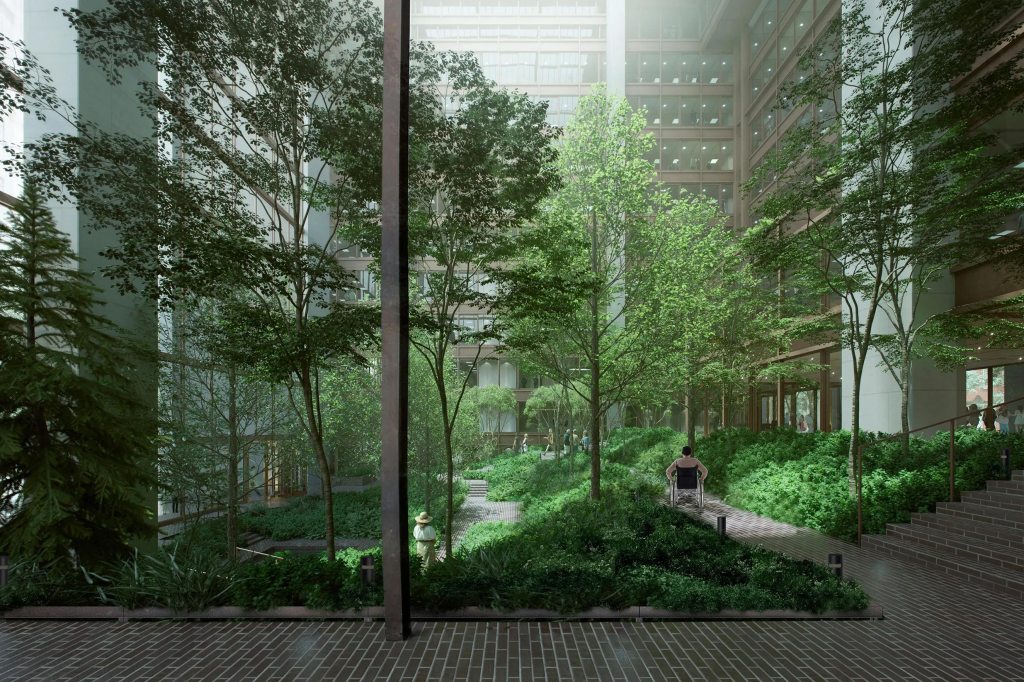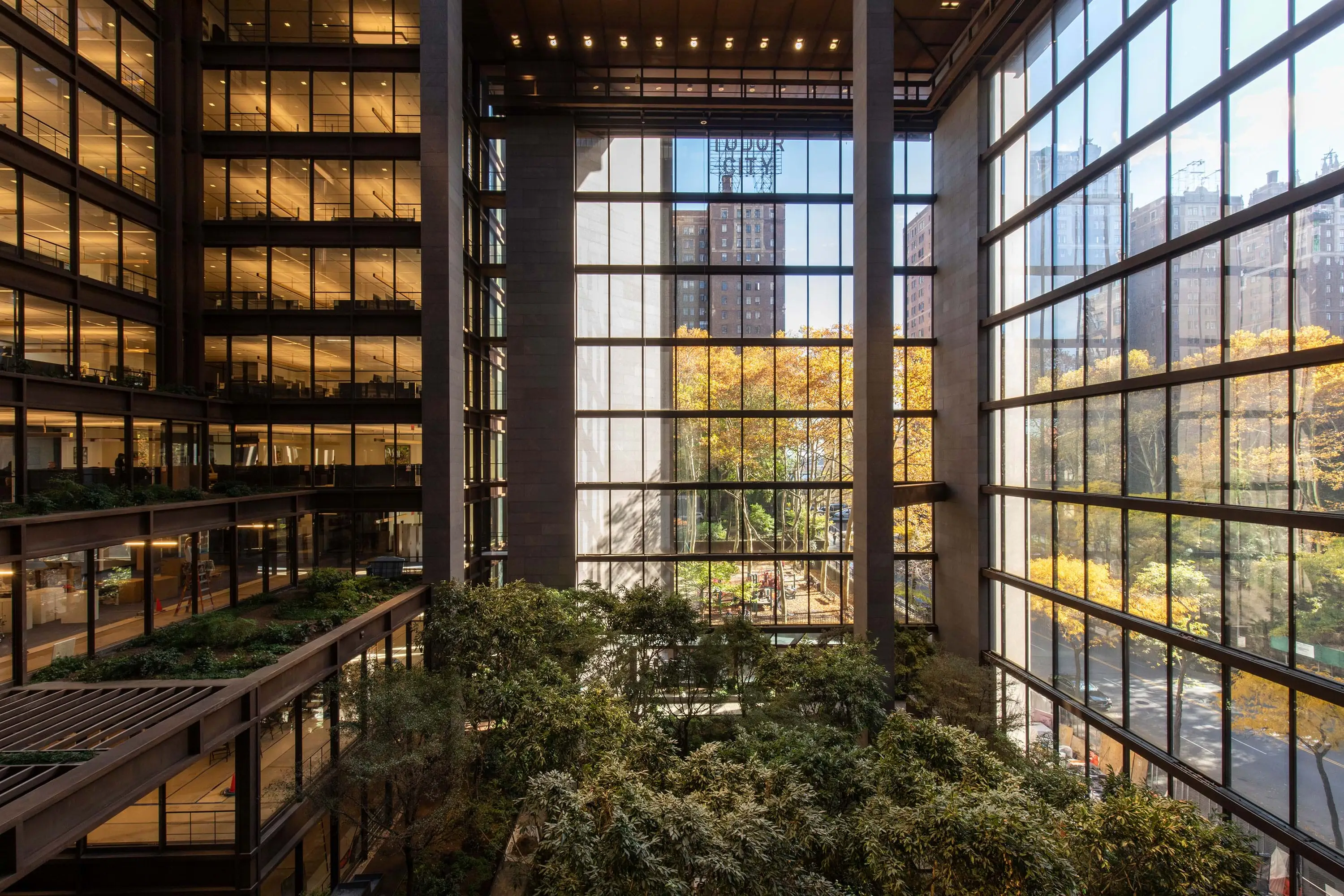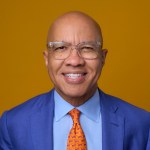
I am writing to share the news that the renovation of our landmark headquarters building is almost complete. After two years of work, the newly-named Ford Foundation Center for Social Justice will open its doors in December.
It will not only be a headquarters for the foundation. As the new name suggests, the building will be a unique asset for champions of social justice across sectors and geographies—a vibrant, fully accessible hub with 54,000 square feet of meeting space for use by grantees and nonprofits advancing change in the US and globally.
I am also delighted to share that joining us in the center will be the UN Foundation, Philanthropy New York, and the Nonprofit Coordinating Committee of New York—three organizations that contribute to strengthening the social sector locally and globally. With an open-plan design, our own office footprint will be reduced to just half the total floor space, allowing us to double the previous amount of convening space and welcome our three tenants and their visitors.
Since we announced the renewal project in late 2015, rising uncertainty, anxiety, and divisiveness around the world have underscored the importance of investing in social justice. More than ever, people and organizations need space to come together to discuss, imagine, and chart a path to a more just world. We hope the center helps to fulfill this need.

Transforming a landmark
When I first wrote about the project, I explained that the plan to transform our building grew out of a legal requirement to bring the 50-year-old building into compliance with updated New York City safety codes, taking effect in 2019.
We knew the scale and nature of the undertaking, including installing sprinklers and smoke exhaust fans, would be extensive. So it gave us an opportunity to not only fulfill the standards of city code, but to rise to the standards of our mission. Working in partnership with our architecture and design team, led by Gensler, we focused on a renewal that emphasizes openness, accessibility, sustainability, and a collaborative spirit. Importantly, the building will be a model in disability access, far exceeding the requirements of the Americans with Disabilities Act.
With attention to environmental sustainability, we will be far more efficient with heating, cooling, and electrical use. Wherever we could, we opted to restore rather than replace. And we are striving to meet the standards for LEED Platinum certification.
It’s been deeply gratifying to see the renovation proceed in a way that exemplifies the foundation’s values. For example, our construction manager is Henegan Construction, a woman-owned and led firm. More than 47 percent of the workers on the project identify as minorities, and nine percent as women—far above industry standards. The renovation itself is registered as a Nontraditional Employment for Women (NEW) project, which trains and places women in trades that have long been male-dominated.
Apart from the construction process, a mission-driven building means one that is more open to the public, including our landmarked atrium garden, an art gallery where visitors can discover artists whose work engages issues of justice, and a state-of-the-art auditorium with an enlarged stage to host a range of cultural programming, including documentary films. We expect to welcome hundreds of visitors to the building each week, and to host dozens of social sector convenings and meetings every month.
I must underscore that as stewards of this important architectural landmark, we took great care to make these changes while ensuring the renovation reflects the original vision of architect Kevin Roche, whose timeless design is still the overwhelming feature of the building. The repurposed fixtures and furniture maintain the building’s essential character.
Mission-driven and financially smart
As I shared two years ago, the cost of the project to meet the requirements of the new city code has been significant. It’s not a cost we bear lightly, nor was it a decision we arrived at easily. We carefully weighed all our options—including relocating—before proceeding and took advantage of the organization’s strong financial health and the low cost of borrowing to finance the work. From the beginning, it was our priority to protect our grantmaking and the endowment that makes it possible, and we were able to do so with a bond that we’ll repay over 30 years. Thanks to this smart financing, our grantmaking budgets will remain intact.
Ultimately, the opportunity to reimagine the building we love—to make it more useful and valuable to the organizations we support, as well as to the public—was too compelling to pass up. When we welcome you back to the renovated headquarters late this year, you will enter a building meant to serve urgency and action—and you.
We look forward to seeing you on East 43rd Street.
Learn more about the Ford Foundation Center for Social Justice, including its convening spaces.
